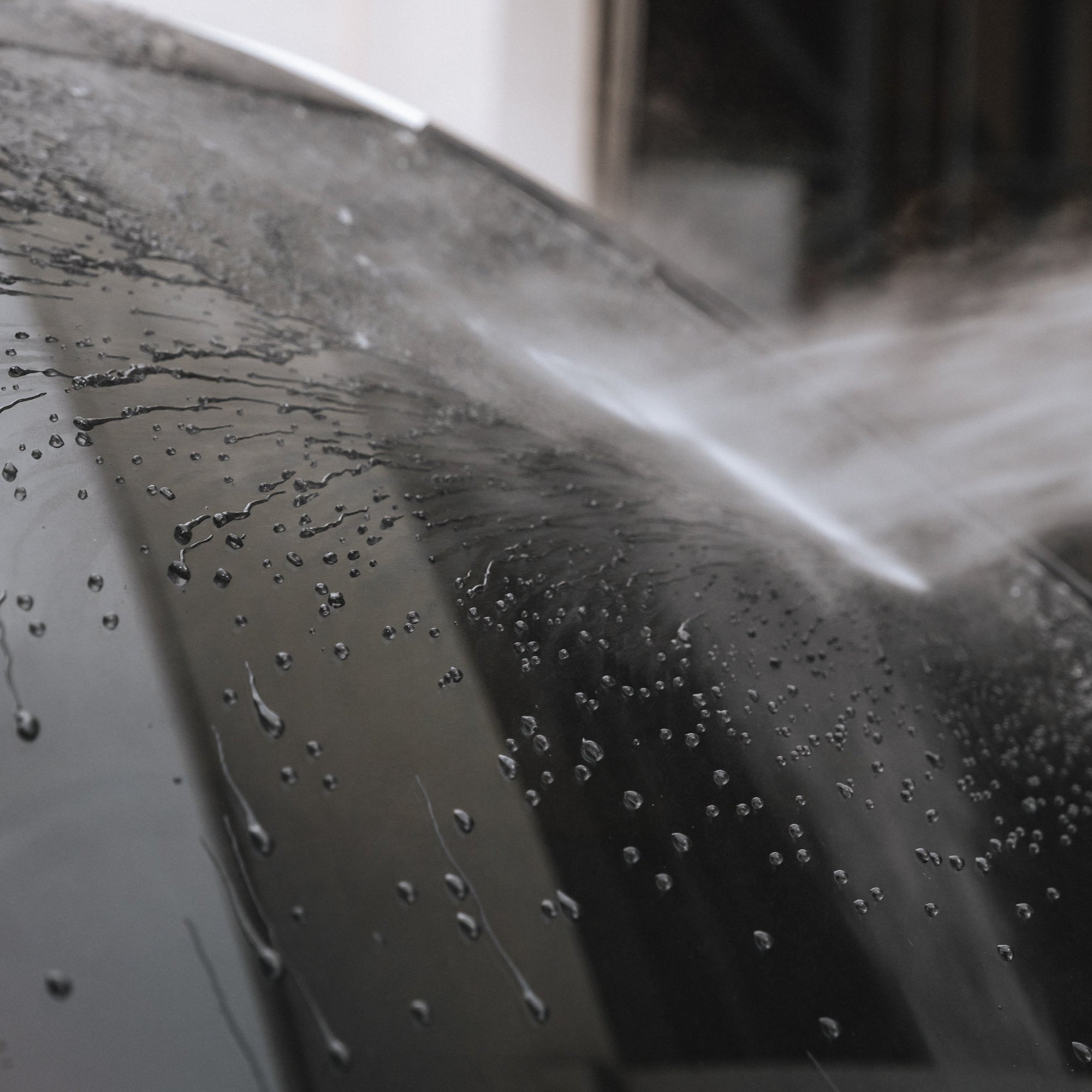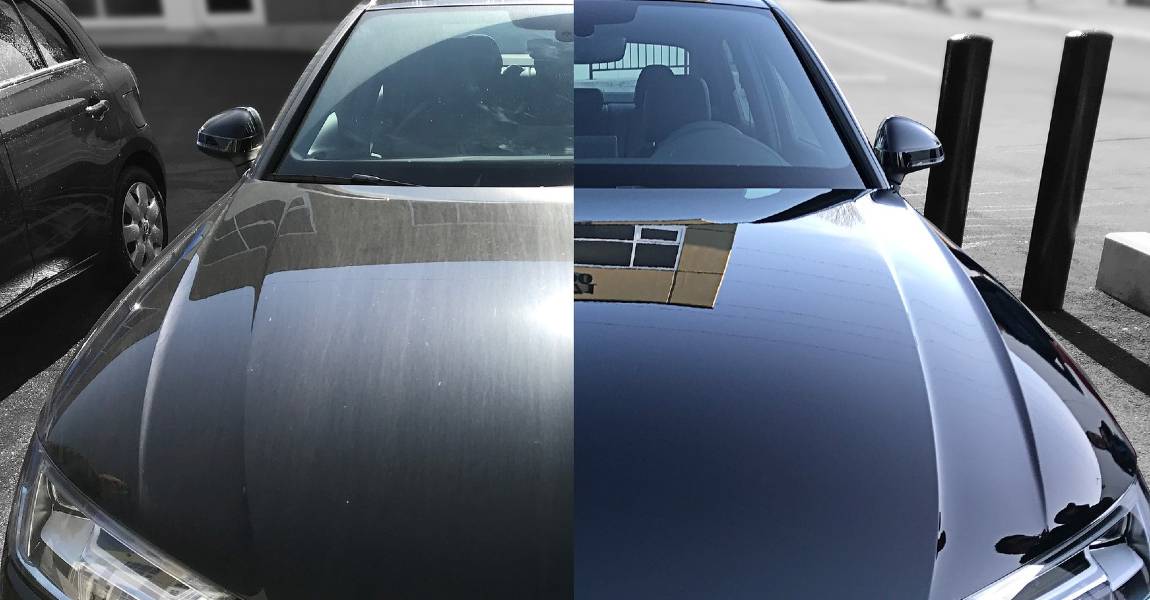The Function of Ceramic Coating in Enhancing Your Cars and truck's Resale Worth
The Function of Ceramic Coating in Enhancing Your Cars and truck's Resale Worth
Blog Article
The Importance of Ceramic Coating: Securing Your Automobile's Exterior With Accuracy
In an era where maintaining the functional and aesthetic stability of your lorry is paramount, ceramic finishing arises as a critical option. With its one-of-a-kind bonding homes, ceramic finish provides a level of security that much goes beyond conventional waxing techniques.
Advantages of Ceramic Coating
When it involves preserving a cars and truck's visual charm, ceramic finish offers substantial benefits. This advanced safety layer offers a long lasting guard against ecological impurities, including dirt, gunk, and dangerous UV rays. By creating a semi-permanent bond with the lorry's paint, ceramic coatings effectively avoid oxidation and fading, ensuring that the auto keeps a glossy, showroom-like finish for an extended period. This not only enhances the lorry's visual charm yet additionally adds to its long-term value.
In addition to its protective top qualities, ceramic finishing offers impressive hydrophobic properties, triggering water and other fluids to bead off easily. This function streamlines the cleaning procedure, as dirt and debris are much less likely to follow the surface, lowering the frequency and initiative required for upkeep. Furthermore, the layer's resistance to chemical spots from acidic contaminants like bird droppings and tree sap is one more significant benefit, minimizing prospective paint damages.
Ceramic coverings additionally enhance scrape resistance, giving a layer that can absorb small abrasions and swirl marks. This feature is particularly valuable in preserving an excellent surface area, decreasing the probability of noticeable imperfections and maintaining the honesty of the automobile's paintwork gradually.

Just How Ceramic Finishing Works
Recognizing the technicians behind ceramic finish exposes its effectiveness as a protective solution for lorries. Ceramic layers are basically liquid polymer applications that chemically bond with an automobile's factory paint, developing a safety layer.
Application of ceramic finish includes a meticulous procedure. The automobile's surface have to be completely cleaned up and decontaminated to make certain ideal adhesion. Once used, the liquid polymer develops a semi-permanent bond with the paint, hardening right into a clear, long lasting shield. This guard improves the car's gloss and hydrophobic residential or commercial properties, helping with easier cleansing by causing water and pollutants to grain and slide off effortlessly.
Moreover, the finishing's molecular structure provides resistance to small scratches and chemical stains. Unlike waxes or sealants that rest on top of the paint, ceramic coverings incorporate with the surface area, offering lasting defense. This assimilation is fundamental to its efficiency, making certain the vehicle's surface continues to be pristine for many years.
Contrasting Ceramic Coating to Alternatives
In the realm of vehicle security, ceramic layer stands as a formidable option when compared to conventional options such as waxes and sealers. While waxes supply a short-lived glossy finish, generally lasting just a couple of weeks to months, ceramic coverings provide a longer-lasting solution, frequently enduring for years. This resilience is attributed to the chemical bonding that occurs when ceramic coatings are used, creating a solid layer that is resistant to ecological threats.
Contrastingly, sealers, although more resilient than waxes, still drop short of the robust defense used by ceramic finishings. Sealants can generally last for approximately a year, supplying a synthetic guard versus certain components. Nonetheless, they lack the superior hydrophobic homes and UV protection that ceramic layers provide.
Additionally, ceramic layers provide improved scrape resistance, which neither waxes neither sealers can effectively match. In summary, while standard waxes and sealers supply basic protection, ceramic finishings offer a thorough, long-term solution that considerably improves and protects the automobile's outside coating.
Application Refine Clarified
Using ceramic coating to a vehicle requires a precise process to guarantee optimal visit site results and resilience. The preliminary step involves thoroughly cleaning the vehicle's surface to remove dirt, oil, and previous waxes. This is crucial for ensuring the coating sticks effectively. A pH-neutral hair shampoo and a clay bar therapy are typically utilized to achieve a pristine surface area. When cleaned up, the vehicle is dried out and brightened to get rid of any imperfections, as any kind of existing swirls or scratches can become extra noticable after the finishing is applied.
Complying with surface area prep work, the application of the ceramic coating starts. The finishing is usually used in a climate-controlled atmosphere to avoid dust fragments from picking the freshly cleaned up surface. Utilizing an applicator pad, the ceramic coating is used in small sections to make certain even protection. It is vital to comply with the manufacturer's guidelines pertaining see here to the suitable find out this here healing time and application thickness.
After application, the covering needs a details curing period, throughout which the lorry should be safeguarded from water and pollutants. This healing procedure can vary depending on the product however usually varies from 24 to 48 hours. Ultimately, this in-depth procedure is crucial in achieving a resilient and glossy coating.
Upkeep Tips for Longevity
To keep the long life of a ceramic covering, adherence to a self-displined upkeep regimen is important. Stay clear of automatic vehicle cleans, as their extreme brushes can endanger the layer's honesty.
Post-wash, drying out the car with a clean microfiber towel prevents water places that may degrade the coating with time. In addition, apply a ceramic coating booster every couple of months. These boosters strengthen the hydrophobic residential properties and improve the covering's safety abilities, ensuring it continues to be efficient against impurities.
Remember that car parking locations play a vital function in upkeep. ceramic coating. Whenever possible, park in shaded locations to lessen UV exposure, which can slowly weaken the layer. For long-lasting storage space, think about using a cars and truck cover for added defense against ecological elements
Final Thought
In conclusion, ceramic layer offers as an essential safety layer for car outsides, offering resilient defense versus ecological elements such as gunk, dirt, and uv rays. By forming a semi-permanent bond with the paint, it boosts visual appeal while protecting the car's value. Its hydrophobic buildings help with much easier upkeep, distinguishing it from alternative protective approaches. Recognizing the application process and sticking to upkeep referrals are important for maximizing the longevity and efficiency of ceramic finish.
When it comes to protecting a cars and truck's aesthetic charm, ceramic covering offers significant benefits. By developing a semi-permanent bond with the automobile's paint, ceramic finishings efficiently avoid oxidation and fading, ensuring that the car keeps a shiny, showroom-like coating for a prolonged period. Ceramic coatings are basically liquid polymer applications that chemically bond with a vehicle's manufacturing facility paint, producing a protective layer. In recap, while standard waxes and sealants offer standard security, ceramic coverings present a thorough, long-lasting solution that dramatically preserves the lorry and improves's outside surface.

Report this page